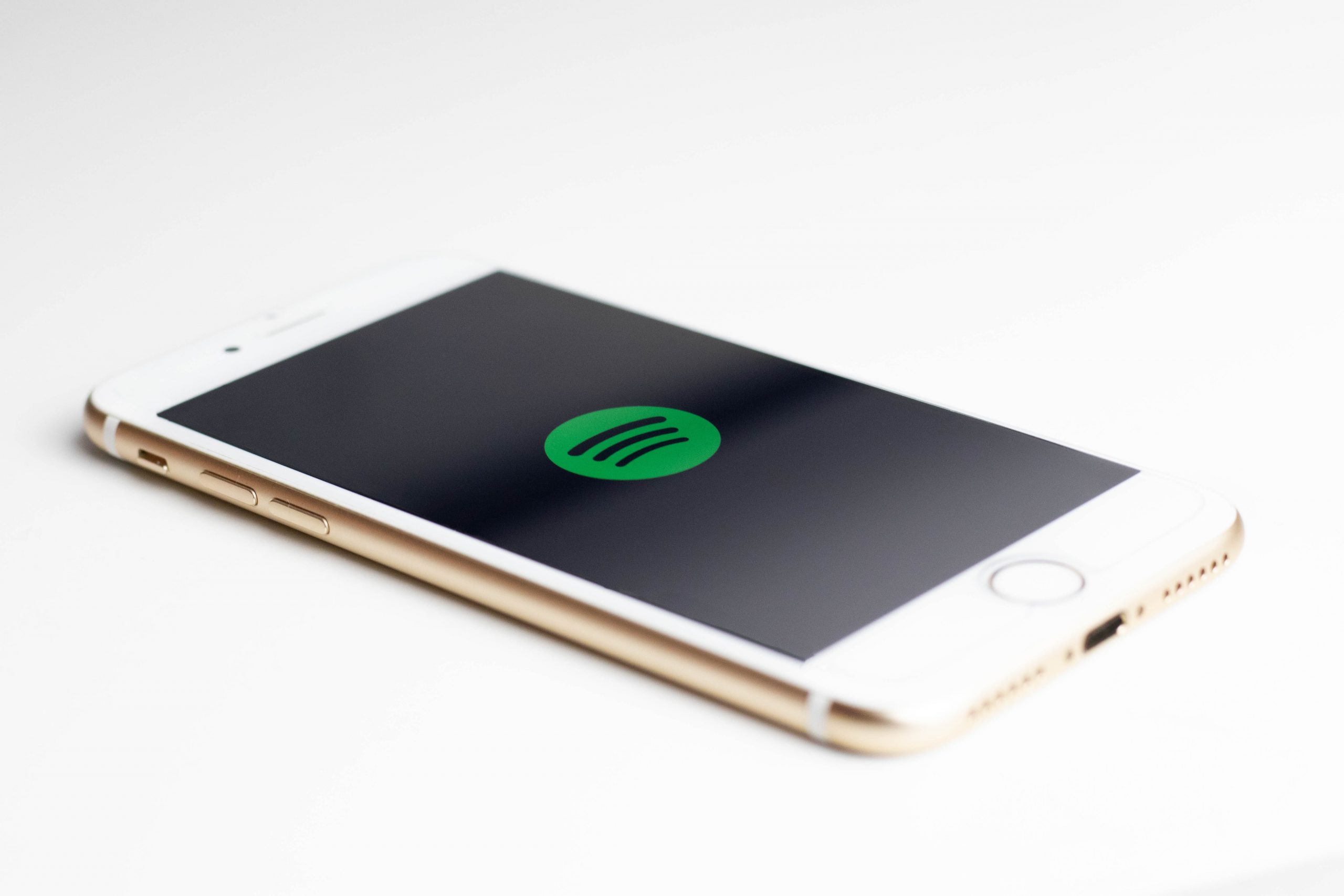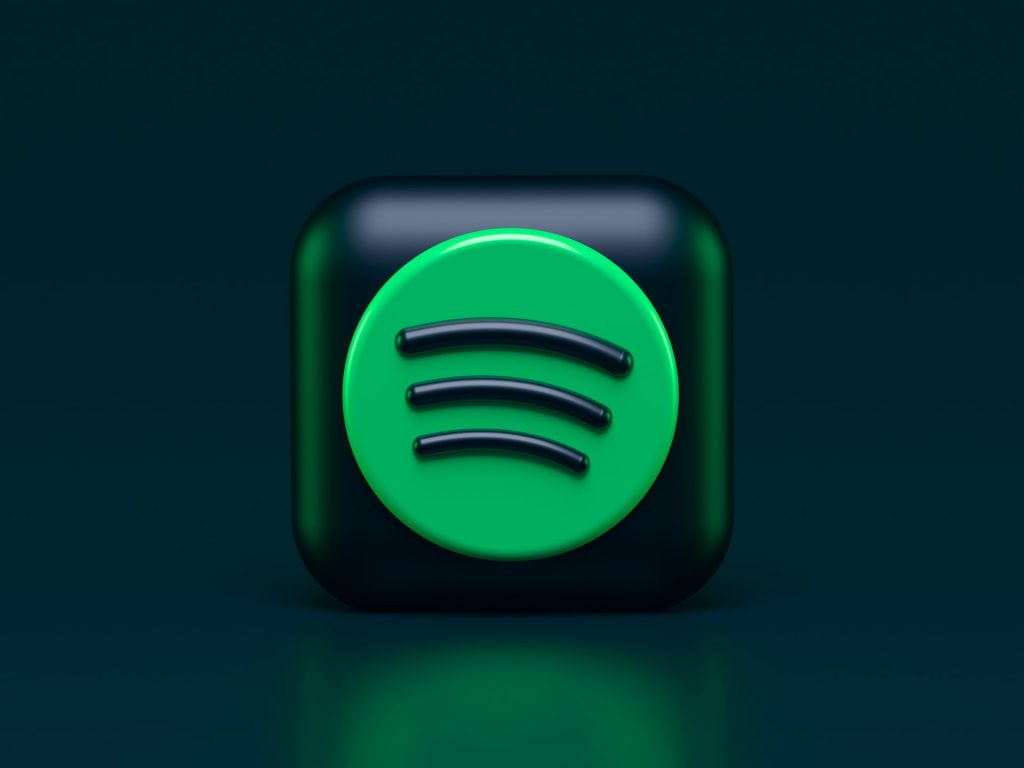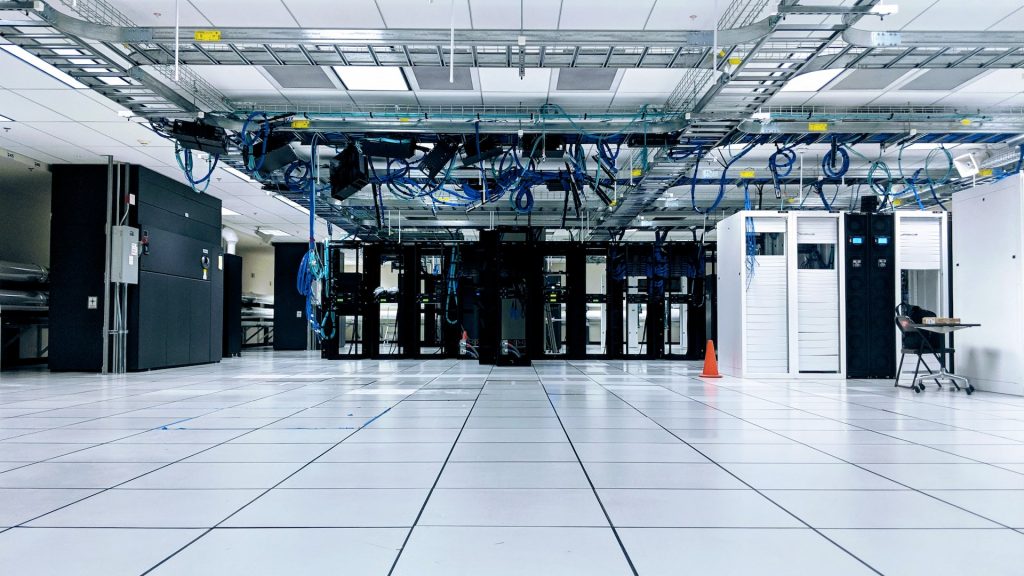
How Does Spotify Work? Spotify Tech Stack Explored — The Tech Behind Series
Julian Wallis
21 min read

What Is Spotify? 🎧

Spotify is often the go-to app for music lovers worldwide. With millions upon millions of songs from every genre imaginable, you can tailor playlists to fit whatever mood or style captures your fancy. Yet, have you ever wondered… how does Spotify work; how does it manage to do everything it has been doing?
Before diving into that, let’s start with what Spotify is.
Spotify is a digital music streaming service that allows users to access a vast library of music and podcasts. The service was launched in 2008 and has since become one of the world’s most popular music streaming platforms, with millions of users worldwide.
The platform offers a free version with ads and a premium version without ads, allowing users to listen to their favourite music and podcasts on demand, create personalised playlists, and discover new artists and content based on their listening history and preferences.
The service is available on various platforms, including desktop, mobile, and web, and offers a range of features such as offline playback, high-quality audio, and social sharing.
This blog article will help you understand the fundamentals of Spotify and the tech behind the music-streaming service. We will also dive deeper into the tech stack that it uses.
Without further ado, let’s get started then!
Understanding Spotify: The Basics 🧩
Spotify is a digital music streaming service that uses a complex system of servers, algorithms, and data analytics to deliver music and podcasts to users. The platform is known for the following.
🎶 Music & Podcasts
Spotify offers a vast library of music and podcasts. Users can search for and stream specific songs, albums, playlists, and podcasts or use the service’s recommendation engine to discover new content based on their listening history and preferences.
In other words, Spotify offers its users a wide variety of music and podcasts, ranging from popular mainstream genres like pop, hip-hop, and rock to more niche genres like jazz, classical, and world music. Spotify’s podcasts cover various topics, including news, entertainment, true crime, sports, health, and wellness.
🗄️ Distributed Servers
Spotify uses a distributed network of servers to store and deliver music and podcasts to its users. The company has multiple server locations worldwide, which work together to ensure the content is provided quickly and reliably. This approach to server infrastructure is known as a Content Delivery Network (CDN).

The servers in Spotify’s CDN work together to serve content to users in their respective regions. For example, when a user requests a song or podcast episode, the request is routed to the server closest to them. This reduces the distance, resulting in faster access. The server then streams the content directly to the user’s device, minimising delay or buffering.
By using a distributed network of servers, Spotify can ensure that its content is delivered efficiently to users worldwide, providing a seamless user experience.
🧮 Algorithms
Spotify’s recommendation algorithm is a sophisticated system that analyses users’ listening history and preferences to suggest new content. The algorithm uses a combination of collaborative filtering, natural language processing, and machine learning techniques to make personalised recommendations to users.
The algorithm considers various factors, such as the user’s listening habits, the genres and artists they listen to, and the content’s popularity, to generate recommendations relevant to the user’s interests. The algorithm can then suggest new content that other users with similar interests have enjoyed. It also uses natural language processing techniques to analyse the lyrics and metadata of songs to make more informed recommendations.
The algorithm learns from the user’s feedback by analysing how they interact with the recommended content, such as skipping or saving songs, to refine its recommendations further. Spotify’s recommendation algorithm is critical in providing a personalised and enjoyable user experience by delivering content tailored to users’ tastes and preferences. You can check out the Google’s search algorithm explained article for a better understanding of how these work.
📊 Data Analytics
Spotify uses data analytics to gain insights into how users interact with its service. The company collects a vast amount of user behaviour data, including the songs they listen to, the playlists they create, the artists they follow, and the devices they use. This data is then used to improve the service’s recommendation engine, personalise the user experience, and identify areas for improvement.
It’s evident that the company’s recommendation algorithm learns from user behaviour data, such as skipping songs and saving songs and playlists. This data is also used to personalise the user experience by suggesting songs and playlists tailored to each user’s tastes.

Data analytics also helps in identifying areas for improvement, such as identifying songs or features that are less popular among users and adjusting the service to meet users’ needs better. Data analytics is crucial in helping Spotify provide a personalised and enjoyable user experience.
💬 Recommendation Algorithm
Spotify’s personalised recommendations set the service apart from other music streaming platforms. The company’s playlists are tailored to each user’s tastes and preferences. In addition, they are providing fresh content and helping them discover new music. Some of the most popular playlists on Spotify include Discover Weekly, Release Radar, and Daily Mix.
Discover Weekly is a playlist updated every Monday and comprises 30 songs selected based on listening history and preferences. The playlist helps users discover new music they may not have heard before. The songs are chosen based on the user’s listening habits and those of other users with similar tastes. Release Radar is a playlist updated every Friday and features new releases from artists that the user follows or has listened to. Finally, Daily Mix is a set of playlists that are updated daily and feature a mix of the user’s favourite songs and new content based on their listening history.
💎 Ads & Premium
Spotify offers users the choice between a free version with ads and a premium version without ads. The free version allows users to listen to music and podcasts for free but with the occasional interruption of ads. The free version also limits users’ ability to skip songs, shuffle playlists, and download content for offline playback. However, despite these limitations, the free version provides users access to a vast library of content and personalised playlists, making it a popular choice for many listeners.
The premium version of Spotify offers users additional features and benefits, making it a more appealing option for serious music lovers. The premium version is ad-free, providing uninterrupted listening to music and podcasts. It also offers higher-quality audio, allowing users to listen to their favourite tracks with greater clarity and depth. Premium users can also download content for offline playback, which is especially useful when travelling or in areas with poor internet connectivity.
In addition, premium users can access the entire library of music and podcasts with no restrictions, allowing them to discover new content and expand their music taste. These features, combined with the personalised recommendations and playlists, make the premium version of Spotify a top choice for music lovers who want a high-quality listening experience.
How Does Spotify Work? – Spotify Tech Stack ⚙️
Now that you have understood the basics of Spotify, let’s address the elephant in the room: how does Spotify work?
The Spotify app uses a wide range of technologies to power its music streaming platform. Here’s an overview of the technologies used in different parts of the Spotify tech stack.
🖥️ Front-End Technologies
- JavaScript

JavaScript is a high-level programming language commonly used to build web applications. It is an essential tool for creating dynamic and interactive user interfaces on websites and is used by many of the world’s largest tech giants, including Facebook, Google, and Amazon. JavaScript can be used both on client-side and server-side web applications but is most commonly used for client-side development. This means that JavaScript code runs in the user’s web browser rather than on a server, making it ideal for creating responsive and interactive web interfaces.
Spotify’s front end, part of the application users interact with, is built primarily using JavaScript. This allows Spotify to create a highly dynamic and responsive user interface that can quickly respond to user input and provide a seamless listening experience. Also, JavaScript allows Spotify to easily integrate with a wide range of third-party services and APIs, which helps power many of the app’s advanced features. By leveraging the power of JavaScript, Spotify can provide a modern, feature-rich user experience that keeps users engaged and coming back for more. (JavaScript APIs can help your business, too!)
- React
React is a JavaScript library used for building user interfaces. It was developed by Facebook and is now maintained by a community of developers. React is popular among developers because it allows them to create complex, dynamic interfaces using a declarative programming style. This means that developers can describe how their interfaces should look and behave, and React takes care of the details of updating the interface when changes occur. In addition, React uses a virtual DOM, allowing it to efficiently update the interface without reloading the entire page.
Spotify uses React for its web and mobile applications because it allows them to create highly responsive and dynamic user interfaces. With React, Spotify can build reusable components that can be used across different parts of the application. This makes maintaining the application easier and adding new features as needed. React also allows Spotify to efficiently manage the application, which means the interface can be updated in real-time as the user interacts. This creates a more engaging and interactive experience for users — something that makes the app so awesome! (Check out React vs Next.js compared for more info on the tech.)
- Redux
Redux is a state management library commonly used with React for building complex web applications. It helps manage the application’s state by providing a centralised store holding the entire application. Redux also provides a transparent and predictable pattern for managing the application, making it easier for developers to understand and make further improvements.
Spotify uses Redux to manage the state of its front-end applications, including web and mobile applications. With Redux, Spotify can keep track of complex forms such as user authentication, search queries, and music playback status. This makes managing and updating the application’s state easier. Redux also provides tools for debugging and tracing changes to the application, making identifying and fixing issues easier.
🛠️ Back-End Technologies
- Java
Java is a popular programming language for building large-scale applications, particularly in the enterprise space. It is an object-oriented language designed to be platform-independent, meaning that code written in Java can be run on any operating system that supports the Java Virtual Machine (JVM). In addition, Java is known for its reliability, scalability, and security, making it a good choice for building back-end systems that handle large amounts of data and traffic.
Spotify’s back end is primarily built using Java, allowing the company to handle the massive amounts of data it needs to process daily. In that regard, Java provides many libraries and tools for building and managing complex systems. Also, Java’s ability to run on multiple operating systems makes it easier for Spotify to deploy its back end on a wide range of hardware and infrastructure, including cloud-based systems.
By leveraging the power of Java, Spotify can create a back-end system that is reliable, scalable, and secure, allowing it to deliver a seamless listening experience to millions of users worldwide.
- Cassandra

Apache Cassandra is a distributed database management system that handles large amounts of data across multiple servers. It is an open-source project that Facebook originally developed, and the Apache Software Foundation now maintains it. Cassandra is popular for its scalability, high availability, and fault tolerance, which makes it a popular choice for companies that need to store and manage large amounts of data. In addition, Cassandra provides various features for managing distributed data, such as automatic data partitioning, replication, and data consistency.
Spotify uses Cassandra to store its music catalogue and user data, including playlist information, user preferences and listening history. In addition, Cassandra allows Spotify to store and manage massive amounts of data across multiple servers, which is essential for providing a seamless listening experience to millions of users worldwide. With Cassandra, Spotify can easily add new servers to its cluster as its user base grows without worrying about data consistency or availability. Moreover, Cassandra’s ability to replicate data across multiple servers ensures the data is always available, even if one or more servers fail.
- Apache Kafka
Apache Kafka is a distributed platform for large-scale data streaming and real-time event processing. It is an open-source project LinkedIn developed, and the Apache Software Foundation now maintains it. Kafka is known for its scalability, high throughput, and low latency, making it a popular choice for companies that process large amounts of data in real-time. Also, Kafka is a reliable and scalable platform for processing and analysing data as it flows through the system.
Spotify uses Kafka to handle data streaming and real-time event processing in its back-end systems. Kafka allows Spotify to process large amounts of data in real-time, essential for providing its users with a seamless listening experience. With Kafka, Spotify can easily handle streaming data from various sources, such as user actions, music playback events, and social interactions.
Kafka also provides a reliable and fault-tolerant platform for processing and analysing data, ensuring the data is always available and accurate. Additionally, Kafka’s ability to integrate with other tools and platforms, such as Hadoop and Spark, allows Spotify to analyse and process the data in various ways quickly.
- Docker
Docker is a containerisation platform that allows developers to package applications and their dependencies into portable containers. These containers can be run on any operating system supporting Docker, making deploying and managing applications across different environments easier. In addition, Docker provides a consistent and reproducible environment for applications, which can help to reduce compatibility issues and streamline the deployment process. As a result, Docker deploys and manages microservices to create a complex application.
Spotify uses Docker to deploy and manage its microservices, which are the building blocks of its back-end architecture. Docker allows Spotify to package each microservice into a separate container, which can be deployed and managed independently. This provides greater flexibility and scalability, as new microservices can be added or removed without affecting the rest of the system.
Docker also allows Spotify to quickly test and deploy new versions of its microservices, which helps to ensure that the system is always up-to-date and running smoothly. Furthermore, Docker provides a consistent environment for each microservice, which makes it easier to manage dependencies and avoid compatibility issues.
- Kubernetes
Kubernetes is an open-source platform for automating containerised application deployment, scaling, and management. It provides a powerful and flexible way to manage containerised applications and services, allowing them to be deployed across multiple servers and clusters. As a result, Kubernetes manages complex containerised applications and services and is often used in large-scale production environments.
Spotify harnesses the power of Kubernetes to support its containerised applications and services. Kubernetes provides a unified platform for managing and orchestrating containerised applications, which makes it easier for Spotify to manage its back-end infrastructure. With Kubernetes, Spotify can deploy, scale, and manage its containerised applications and services consistently and reliably, regardless of the underlying infrastructure.
Kubernetes also provides powerful features for managing microservices, such as service discovery, load balancing, and automatic scaling, which makes it easier for Spotify to create and manage complex back-end systems. What’s more, Kubernetes provides a flexible and extensible platform, which allows Spotify to integrate with a wide range of other tools and platforms, such as Prometheus for monitoring and Grafana for visualisation.
👨💻 Other Technologies
- Cloud Services
Spotify relies heavily on cloud services like Amazon Web Services (AWS) and Google Cloud Platform (GCP) to host and scale its infrastructure. By embracing cloud computing, Spotify has reduced latency, increased performance, and improved its scalability while cutting costs.
AWS and GCP provide a wide range of services enabling Spotify to deploy new resources quickly. These cloud providers can configure highly available servers and automate deployment processes with tools like containers and virtual machines. AWS also provides serverless computing, object storage, database hosting, analytics and machine learning capabilities, allowing Spotify to quickly deploy new features without worrying about scaling or managing the underlying infrastructure.

Through these robust cloud services from AWS and GCP, Spotify can provide seamless access to its vast music library anytime from any device. This allows it to remain competitive in a crowded market by delivering quality service with minimal downtime despite skyrocketing demand.
- Microservices
A microservices architecture is a software development approach where applications are broken down into small, independent services that communicate with each other over APIs. Each microservice is developed and deployed independently of the others, which allows for greater flexibility and scalability.
Each service handles specific functionality in a microservices architecture, such as user authentication, music catalogue, or payment processing. These services can be developed in different programming languages and run on other servers or clusters. This approach allows for better fault tolerance, as failures in one service are less likely to affect the rest of the system.
Spotify’s back end is built using a microservices architecture, which allows for better scalability since each service can be scaled independently. This means that Spotify can add more resources to specific services that require more processing power or handle more traffic without climbing the entire system. fault This approach enables Spotify to develop and deploy each microservice independently, meaning new features can be added or updated without affecting the rest of the system. It also allows for better fault isolation, as a failure in one microservice is less likely to affect the rest of the system.
- Application Programming Interfaces (APIs)
Spotify offers a range of APIs that allow third-party developers to integrate with the platform and build applications that leverage the music data and features available on Spotify. For example, the Web API provides RESTful endpoints for accessing and managing music data, such as track, album, artist, and playlist metadata.
The Web API also provides endpoints for user authentication and authorisation, allowing third-party applications to securely access user data and perform actions on behalf of the user. The iOS and Android SDKs provide native libraries and APIs for building mobile applications that can play music and interact with Spotify. These SDKs allow third-party applications to access Spotify’s music catalogue, playback features, and user data, such as playlists and preferences.
Spotify’s APIs enable third-party developers to build innovative applications and services that leverage the data and functionality available on the platform. For example, developers can use Web API to create music recommendation engines, playlist generators, and other music discovery applications. Besides, the iOS and Android SDKs allow developers to build music players, personal assistants, and other applications that integrate seamlessly with the user’s Spotify account.
Also, Spotify provides developer tools and resources, such as documentation, code samples, and community forums, to help developers get started and troubleshoot any issues they encounter.
- Machine Learning
Spotify uses machine learning to power its recommendation engine, an algorithm that can identify patterns and correlations in user data. This enables the system to find music and playlists that may interest users based on their listening habits and preferences. The recommendation engine helps Spotify stay competitive in the streaming music market by providing personalised content recommendations tailored to users’ tastes.

The machine learning algorithms used by Spotify can produce highly-tailored results that improve over time as it collects more user data. For example, collecting user data, such as which songs they listen to, which genres they prefer, or what time of day they usually listen, can better understand user behaviour and offer them a more relevant experience.
In addition, the system considers external factors such as a user’s geographical location or the current weather conditions when suggesting music or playlists. All these considerations help make sure that the recommendations produced by Spotify’s machine-learning algorithm are among the best available on the market.
Some Challenges Spotify Faces 🚧
Like any other technology company, Spotify faces various challenges that can affect its growth and profitability. Here are some critical challenges that Spotify currently faces.
🤼 Competition
Spotify faces a daunting challenge from its chief rivals: Apple Music, Amazon Music, and YouTube Music. All three have sizable user bases and are not afraid to invest heavily to keep their customers satisfied with their services. As the streaming service sector gets more traction, Spotify must find ways of staying ahead of the competition or risk being sidelined by these formidable opponents.
👑 Royalty Payments
Spotify is constantly walking a tightrope in balancing its budget. On the one hand, it must make sizable royalty payments for artists and record labels to get the credit they deserve, which puts a strain on profits. But, on the other hand, it’s no easy feat managing these financial obligations without sacrificing the musician-driven ethos behind Spotify’s success.
👥 User Acquisition & Retention
Spotify has become a famous go-to for music lovers. Still, the company faces an uphill battle to maintain its user base. With intensifying competition from other streaming services in global markets, Spotify must stay nimble and innovative to keep pace with its rivals while continuing to thrive.
💰 Ad Revenue
Despite growing popularity, Spotify needs support to provide an ad-supported free version of its service. With rising expenses to keep the music streaming platform running and limited revenue from ads, it must find creative ways to maintain its current success while continuing to offer users access at no cost.
👮 Regulatory Compliance
As a global company, Spotify is subject to various market regulations and compliance requirements. These requirements can be complex and can vary significantly from one market to another. Spotify has to consider all these regulatory requirements when making its application accessible throughout the world.
🛡️ Data Privacy & Security
Spotify has developed a robust compliance program tailored to each country, focusing on strengthening privacy laws and regulations. In addition, they strive to be proactive and continuously monitor changes in applicable jurisdictions. This program includes data protection impact assessments (DPIA), international data transfers, employee training, and third-party reviews.

The Future Of Spotify & Where It’s Headed 🔮
The future of Spotify looks promising as the music streaming market continues to grow and strengthen. Here are some of how Spotify is likely to develop and grow in the coming years:
- Expansion into New Markets: With success in over 80 countries, it appears Spotify isn’t planning on slowing down soon. Instead, the music streaming giant is poised to expand its reach, venturing into uncharted territory and giving users worldwide access to its expansive library of tunes.
- Original Content: Spotify is pushing boundaries with its initial content offerings to stay ahead of the pack. From exclusive music releases to in-depth podcasts, this streaming service aims to develop a range of unique experiences for listeners and set itself apart from competitors.
- Improved Recommendation Engine: As one of its defining elements, Spotify harnesses the power of machine learning and AI to deliver increasingly tailored music recommendations. Underscoring its commitment to personalisation, the company continues investing in these technologies for an even more personalised experience.
- Partnerships & Acquisitions: Spotify seeks to strengthen its presence through strategic partnerships and acquisitions to reach new users and diversify its product offerings. Recent undertakings include purchasing Gimlet Media and Anchor, allowing them to expand into podcasts – a booming market.
- Ad-supported & Premium Offerings: As the music streaming wars heat, Spotify stays ahead of the game with innovative ideas. They want to expand their free and paid services to give users more options. That includes introducing new premium features and utilising unique advertising formats so listeners can expect something completely unexpected from them soon!
- Integration with Smart Speakers & IoT Devices: Spotify is keeping up with the ever-increasing demand for smart speakers and Internet of Things (IoT) devices, ensuring users can easily access their favourite tunes. With its constant integration into these technologies, Spotify is helping to power our connected lives one song at a time!
Well, that’s it for now, folks! Hope you got a clearer idea of Spotify’s tech stack and how these various technologies have allowed it to stay at the top of the music streaming service mountain for several years. The company’s focus on original content, personalised recommendations, and strategic partnerships will probably drive continued growth and success in the highly competitive music-streaming market.
If you need more information about the tech behind Spotify, or you want to build a music-streaming app — or any kind of app or website for that matter — for your company, feel free to reach out to us for a friendly discovery chat. We’re always happy to hear from you!
Topics
Published On
March 01, 2023

